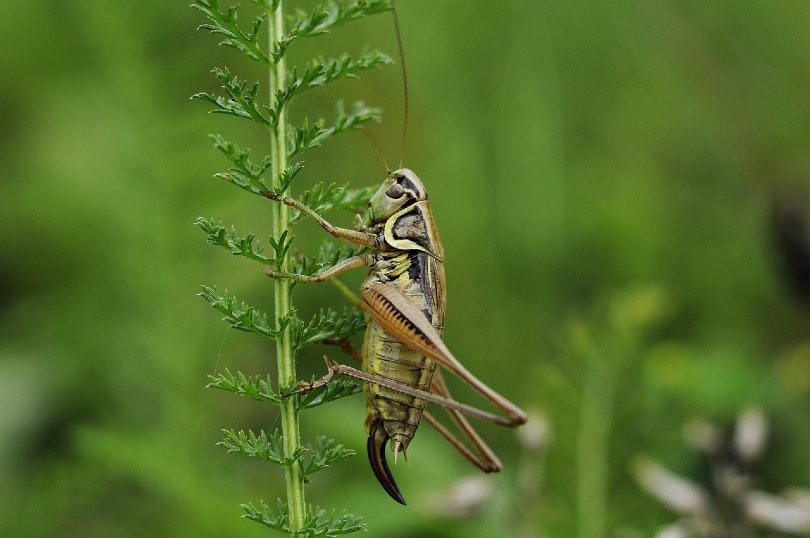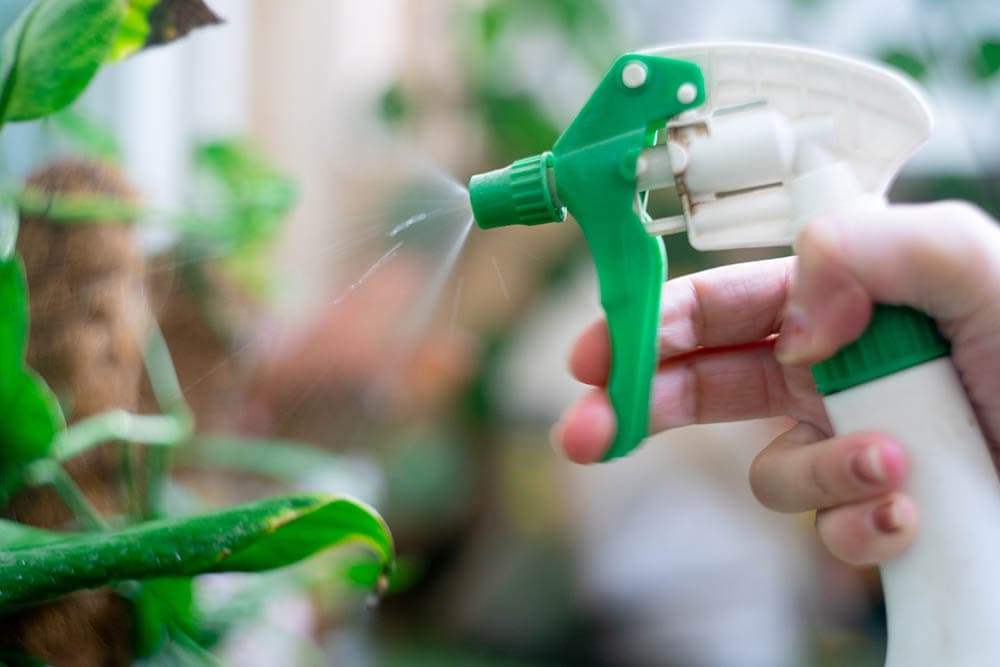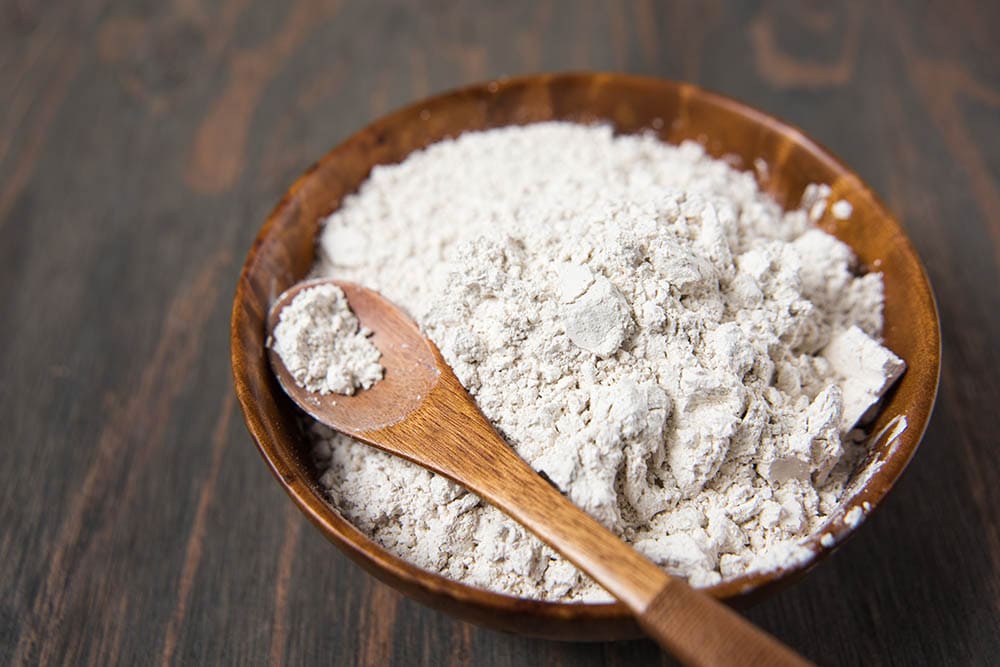How to Get Rid of Crickets in Your Garden: 10 Methods That Work
-
Visnja Radosavljevic
- Last updated:

When you spend a lot of time maintaining your garden, you know how frustrating it can be to deal with pests that try to destroy it. Various insects can attack your garden, but among the most annoying ones are crickets. They can quickly spread, taking over the space and damaging your plants, which is why it’s crucial to get rid of them promptly and efficiently.
Throughout this article, we will provide you with different methods to get rid of crickets in your garden. After reading, you’ll be able to eliminate these pests successfully, and they won’t cause more issues for your plants.
The 10 Methods to Get Rid of Crickets in Your Garden
1. Keep Up Your Garden Maintenance
One of the easiest ways to get rid of crickets and prevent them from accessing your garden is to maintain your garden. That includes mowing your lawn, trimming dense vegetation, and cutting weeds. When your garden is neat, crickets will have fewer hiding spots and food sources, repelling them from the garden.
You should also try to reduce clutter in your garden and keep any garbage away as it could represent a potential food source. It’s also helpful to prevent overwatering your plants because crickets like moist environments, especially for breeding.

2. Remove Outdoor Lights
Crickets are drawn to light, so if your garden has outdoor lighting, it will likely attract crickets. It’s wise to remove your outdoor lights or replace traditional white bulbs with lights with yellowish hues. If you do that, you can place the lights on poles so that the crickets are drawn to that spot instead of the garden.
You should also ensure that your home windows have blinds as the lights inside your home can attract crickets. Another helpful way to get rid of crickets is to place sensor lights in your garden, as they won’t turn on unless there’s someone outside. That way, your garden will get lit when you walk by, but it will remain dark when nobody’s around.
3. Make a DIY Solution
If the crickets have already infested your garden, it might be helpful to make a DIY solution to repel them from your plants. This solution won’t kill them, but will make your plants less attractive to these pests.
- Garlic
- Chilli powder
- Dish soap
- Lukewarm water
You’ll need to mix these ingredients in a spray bottle and leave them to sit for 10 to 20 minutes. Afterward, you can spray this solution on affected areas to eliminate crickets. However, as this DIY spray can possibly damage your plants, it’s best first to test it on a few leaves. If they get burnt, add more water to the solution to dilute it.

4. Clean Your Gutters
Gutters are deep, damp, and dark, which makes them the perfect spot for crickets to breed and slowly take over your garden. They also commonly have natural ingredients inside, providing an excellent food source for crickets. That’s why it’s crucial to clean your gutters regularly.
Although this method might not help as efficiently if the infestation has already begun, regular gutter maintenance will lower the number of crickets in your garden by eliminating breeding spots and food sources.
5. Allow the Natural Predators to Help
Crickets represent an excellent food source for various natural predators, so birds, cats, and even dogs can be a great ally in getting rid of crickets in your garden. If you don’t have a pet, it might be time to consider buying or adopting a cat or a dog to help you lower the number of crickets in your garden.
Another helpful thing you can do is set up birdhouses, bird feeders, and bird baths, as birds love to feast on insects. Bluebirds are especially drawn to crickets, so attracting them to your garden will be highly efficient at reducing the cricket infestation.

6. Inspect Your Lawn
You should inspect your lawn as there could be mole cricket tunnels that provide easy access for crickets to your garden. If there are cricket tunnels in your garden, you’ll likely notice small brown mounds on your lawn and grass patches starting to brown.
Once you find the tunnels, you can perform a soil flush test which will either remove the crickets from the tunnels or they will drown inside. To do this, you need to mix 1 gallon of water with dish soap and pour it into the soil in the areas where you noticed brown mounds and patches.
Open the chamber up with your finger or a screwdriver before pouring the solution so that it reaches the crickets inside. Most of them will come to the surface so you can catch them, while others may drown inside.
7. Catch Crickets and Release Them
Some people believe that killing crickets is bad luck, and if you’re one of them, finding a removal method that won’t harm these insects might be challenging. Although this is a bit extreme, especially if there are many crickets in your garden, you could catch and release them.
If you want to capture multiple crickets at once, you can fill a container with cricket food such as lettuce and some sort of light that will attract them to the container. You should leave it overnight in an area inside your garden where the infestation is visible. By morning, the container will be full, so you can take the crickets to a peaceful area and release them.

8. Plant Nitrogen-Fixing Plants
Crickets love to feast on young flowers and plants, so you can trick them and plant nitrogen-fixing plants to prevent them from eating your other plants.
- Clovers
- Peas
- Beans
- Vetches
You could also plant garlic, sweet potatoes, sweet peas, and cilantro in the garden as they irritate crickets.
9. Sprinkle Diatomaceous Earth in the Garden
Diatomaceous earth is a whitish powder composed of algae skeletons. Once insects, including crickets, come in contact with this powder, they will dehydrate and die. You can find this powder in most home improvement stores, and it’s safe for humans.
You should use the diatomaceous earth in dry areas as it’s not as effective when wet. Also, try to look for food-grade diatomaceous earth as it provides better results.

10. Use Boric Acid
Boric acid is frequently used as an insecticide and can help remove crickets from your garden. It’s commonly in a tablet, pellet, or powder form, and you should place it in areas where crickets typically nest.
As Boric acid can be toxic, you should keep pets and children away, as consuming it can cause health issues.
How to Identify Crickets in Your Garden?
Crickets are common pests you can encounter worldwide, and they can quickly infest and spread in your garden. There are a few different species that you can commonly find inside your garden:
- Mole crickets
- House crickets
- Bush crickets
- Mormon crickets
- Camel crickets
- Jerusalem crickets
- Parktown crickets
It’s easy to spot crickets as they have a unique appearance, with dark bands across their heads and a black, silver, or brown body. Their legs are large, which helps them jump at large distances.
When there’s an infestation, they can take over your garden in no time. Crickets look for damp, moist environments that provide enough food sources for crickets to thrive. Although they are not too harmful, they can feed on your plants and carry diseases that can harm you and your family.
Should I Kill Crickets or Remove Them From the Garden Without Killing Them?
While crickets are somewhat harmful to your garden, they also carry some benefits that might stop you from killing them and make you look for other removal methods.
One of their most significant benefits is that, other than eating your plants, crickets also feast on weeds, so they can act as an excellent weed control inside your garden. They also like to eat organic matter, so they speed up the decomposition, providing rich humus for your soil.
In Conclusion
If there’s a small number of crickets in your garden, you don’t have to kill them as they could be beneficial. However, if there’s a huge infestation, you can use one of the methods we provided to get rid of them, as too many crickets can harm your garden and possibly endanger your health. Check out all the available removal options to find the one that works the best for you and your cricket problem.
- See Also: 10 Reasons Plant Leaves Turn White
- “How to get rid of crickets around your house and garden”
- “Manage Cricket Pests: Controlling Crickets In The Garden”
- “How to Get Rid of Crickets: 7 Natural Cricket Repellent Ideas to Keep Them Away”
- “6 Easy Ways to Get Rid of Crickets in Your Garden”
- “How To Get Rid of Crickets”
- “How to Get Rid of Crickets Outside Naturally (Ultimate Guide)”
Featured Image Credit: BubbleJuice, Pixabay
Contents
